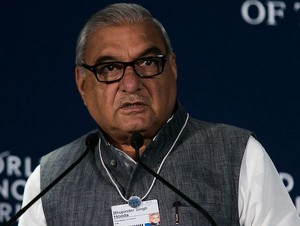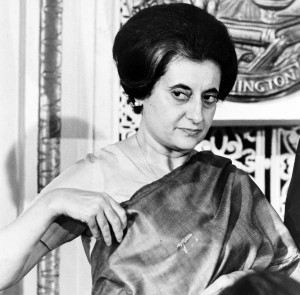Just a few days after the Aam Aadmi Party government ordered for a probe into the proper functioning of the power distributing companies located in the capital, the Bhupinder Singh Hooda led Haryana government announced that it would provide cheaper electricity for domestic users and farmers. The decision by AAP was taken after its earlier move to supply free water for a large section of the population in the country’s capital.

The move made by the Haryana government (and notably several other states in the country) is being considered by many as a cascading effect where the decisions and moves of one government is replicated by other governments in quick succession. This practice is in fact not new, with the UPA government’s record of being redistributive machines fairly known to everyone.
Let’s take a closer look at the growth processes of India along with other countries to get a better idea of this picture.
A successful economy needs two engines to survive, consumption and investment. Democratic countries usually tend to focus more on consumption while authoritarian systems emphasis more on investment while pushing consumption to revolutionary limits.

Countries like South Korea, Japan and Germany etc. actually completed capital accumulation by focusing more on investment than consumption. Inflation was suppressed in order to aid the lower income segments of the population. Consumption was only initialized after the process reached a logical conclusion.
India and the US on the other hand focused equally on investment (capital accumulation) and consumption. However, while the US succeeded in its plan, India faltered and continues to falter to this day. The growth periods experienced by the country occur only in small intervals between longer periods of consumption which in fuelled by redistribution. Investment plans have never been allowed to gather steam. Being a democratic country, India should not be pushed to a position where it expects to focus only on capital accumulation.
A look at previous attempts at growth can also be considered here. The first Five Year plan in the country was launched in 1956. Until the mid-1960s, the country’s growth was unmistakable. At that time, India was still learning to accept democracy. Then in 1967, the Congress government was voted out and the redistribution phase started, slowly stealing the focus from investment.

In 1971, Congress leader Indira Gandhi’s “Garibi Hatao” program ensured that populist limits were reached quickly. However, by 1975, the bludgeoning political crisis ended the chapter. The next plan that was initiated by Rajiv Gandhi in 1981 led to a balance of payments crisis before it ended in 1991. Coalition governments that ruled the country in the 90s did little to alter the country’s economic struts beyond this point even when their redistributive programs affected investment and growth. The programs initiate din 1971 and 1985 could not withstand populist pressures and had to succumb to the same after some time. While Indira Gandhi had to stop her redistributive program in order to reinforce her policies, the Rajiv Gandhi led government literally made India run out of money.
The current phase of redistributive programs initiated by state governments across India has persisted for a longer period owing to the stunning growth of the Indian economy from 2004 – 2008. The existing political developments are trying to trail this growth, promoting current tendencies to focus more on consumption. The political decisions made by the AAP and UPA government can thus directly be influenced by this growth in consumption.

However, the current phase would not last long. A course correction would usually be initiated with an economic crisis or downturn. The same is expected to occur with the Arvind Kejriwal government as well.
India’s plans to focus on investment and consumption at an equal rate have failed to foster the country’s economic growth. The five year plans launched in the country so far have not made any significant impact on the economy, with most of these plans being abandoned over time due to populist pressures. Redistribution programs have become the flavor of the day, with governments coming up with different kinds of these programs in order to appease the masses instead of focusing more on investment and capital accumulation. The result is a phase that is not expected to last long, even with the Arvind Kejriwal led AAP party.



